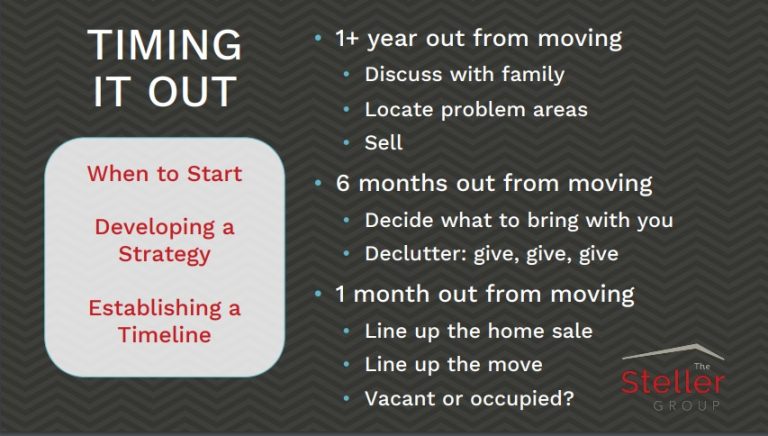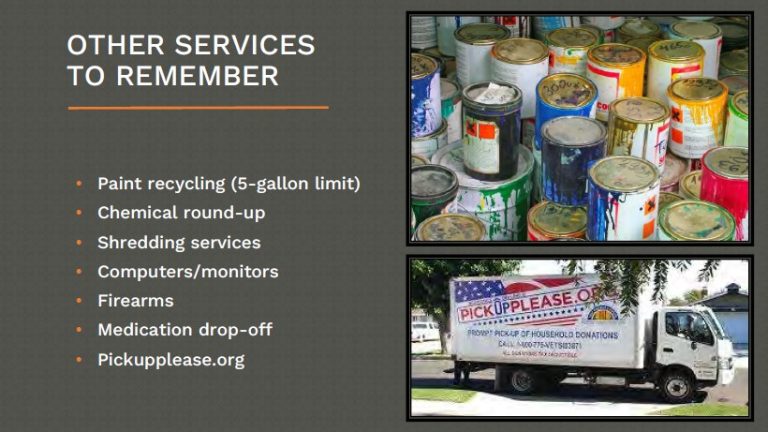What Older Adults Should Know About Downsizing for Retirement
Many older adults will consider downsizing from their current home and moving to a smaller space for retirement. There are plenty of reasons for this decision. Many older adults are empty-nesters whose kids have grown and moved away, so they find they no longer need the space of their current home. Some older adults look forward to simplifying their lives and letting go of the maintenance that goes along with homeownership. Others decide that moving to a smaller place will help them meet their financial goals.
Whether you’re planning to downsize or are still undecided, this article can guide you through the process. We’ll cover tips for preparing to downsize as well as staying positive through what can be a challenging and bittersweet time.
Preparing to Downsize
It’s never too early to start paring down your possessions, even if you’re not sure you’re ready to downsize. This can be overwhelming, so start sooner rather than later to avoid burnout. Here are some additional tips to make preparation easier:
- Plan early. Rushing into a relocation decision or going through your things at the last minute only adds stress. It’s also easier to adjust when you’ve had time to get used to the idea.
- Decide on where to move. If you are moving to an apartment from a detached house, you’ll want to consider what will fit in your new place.
- Start small. Tackle practical must-haves first, such as kitchen and bathroom items. Save the big, emotional items (art, heirlooms, photos) for later. You’ll need more time to decide what you want to do with these treasures.
 Sort by keep, toss, and give away. Professional organizers call this “processing.” Avoid creating a “maybe” pile to help you stay on task.
Sort by keep, toss, and give away. Professional organizers call this “processing.” Avoid creating a “maybe” pile to help you stay on task.- Get rid of most duplicates other than clothing. You probably don’t need six spatulas. For clothing, set a limit. If you have 20 sweaters, pick a few favorites and let the rest go.
- Set aside essential documents. These tend to fall into three categories: 1) proof of identity, such as birth certificates, social security cards, and passports; 2) property documents, including deeds, appraisals, titles, and registrations; and 3) wills and power of attorney documents as well as proof of disability or military service. Most other financial documents are available online; just make sure you have your account numbers and passwords.
- Digitize whatever you can. Photos, letters, and grandkids’ artwork take up lots of space, so make digital versions. You can do it yourself or hire a company to do this for you.
- Set goals and plan a timeline. Work backwards from the date you plan to move, considering the time you’ll need to pack everything. Be sure to include family time in your timeline for any items you are “gifting.”
Downsizing Recommendations from the Pros
In a July 2024 presentation from The Steller Group and A Move Handled with Care, these downsizing professionals offer their tried, true, and thorough tips for decluttering and planning for a move. This excellent resource offers a valuable timeline for planning a move, strategies for decluttering, and insight on how to determine resale value of items you choose to part with.
Downsizing and Moving Timeline
This timeline helps you to plan early and break the process up into stages to keep your downsizing journey manageable.
Understanding the Value of Certain Items & What to Sell, Donate, or Recycle
The Steller Group and A Move Handled with Care outline pointers for determining the value of certain items, from Googling them to see what they’ve sold for recently to walking through estate sales and browsing consignment stores. They also share a number of organizations and resources to consider for selling, donating, or recycling specialty items, such as pianos, antiques, books, paint, computers, and more.
Try to Stay Positive as You Downsize
While change can be challenging and downsizing for retirement can be filled with emotions, there are many ways in which this process can be enjoyable. Take your time as you declutter so you can go through your treasures and reflect on the memories associated with these items. Consider how your life will be better with the upcoming changes and who may benefit from receiving items you decide to part with.
Don’t be afraid to ask for help, whether it’s from a professional moving manager or family members. Going through belongings with friends and family can be an enjoyable process that creates new memories.
Deciding When You’re Ready to Downsize
 For older adults, there are many factors to consider when contemplating the decision to move or downsize. But there are a few basic questions you can ask yourself.
For older adults, there are many factors to consider when contemplating the decision to move or downsize. But there are a few basic questions you can ask yourself.
- Can you stay in your current home for five, 10, or 20 more years?
- Do you feel isolated or are your social interactions sparse?
- Do you have a lot of equity in your home?
- Are you struggling to manage all of your “stuff”?
- Is your home and yard becoming challenging to maintain?
- Do you have unused rooms in your home?
- How is your current health—and what might that mean for your future healthcare needs?
You can also take a look at this assessment Is it the Right Time to Downsize? to help aid in your decision.
Though downsizing may seem overwhelming, these tips can make the process more manageable and less stressful, allowing you to enjoy and look forward to your next chapter. After all, spending less time and energy on home maintenance, yardwork, shoveling snow, or organizing clutter provides new opportunities to pursue hobbies, spend time with family and friends, enjoy the outdoors, or relax with a good book.




